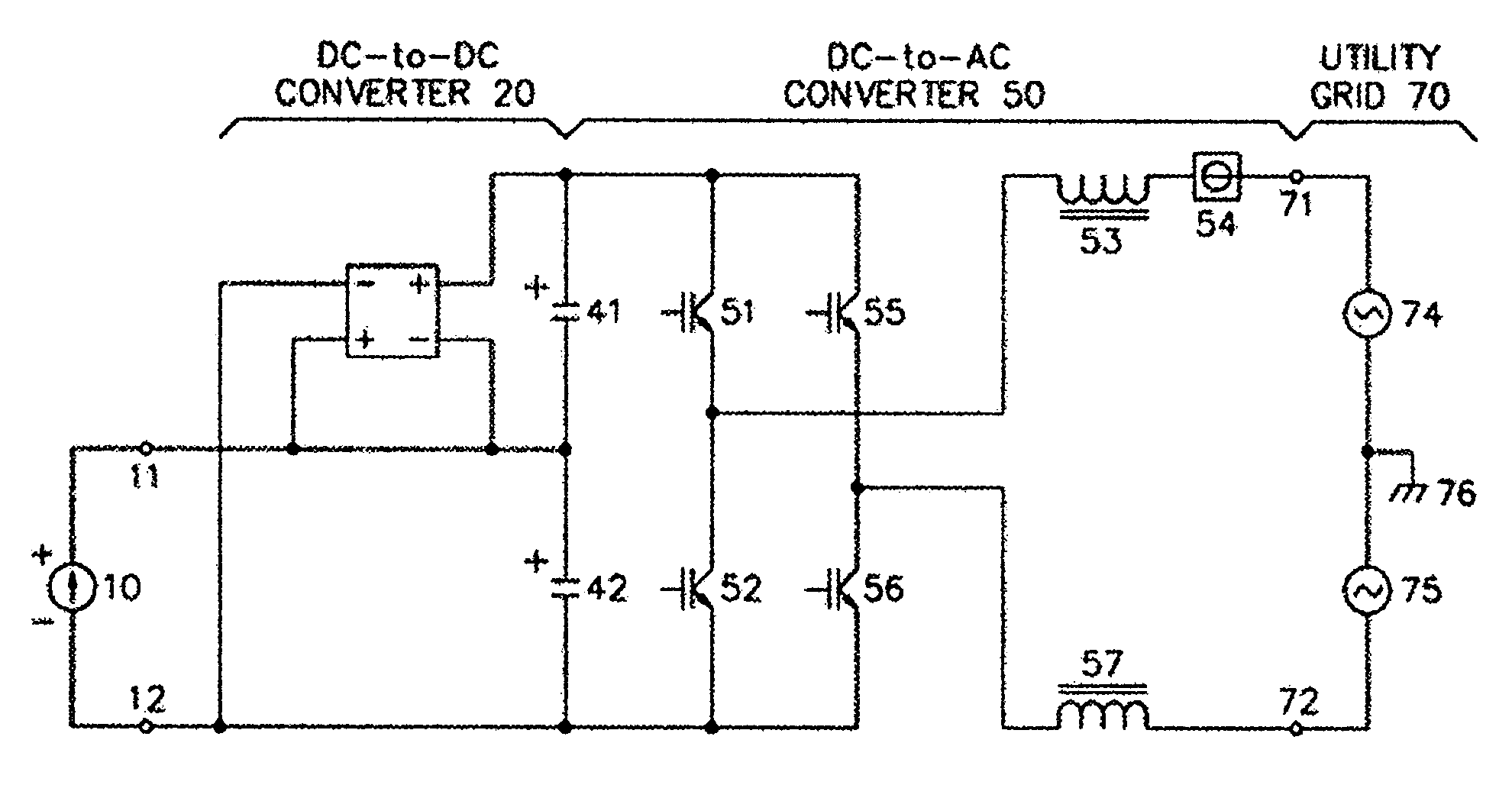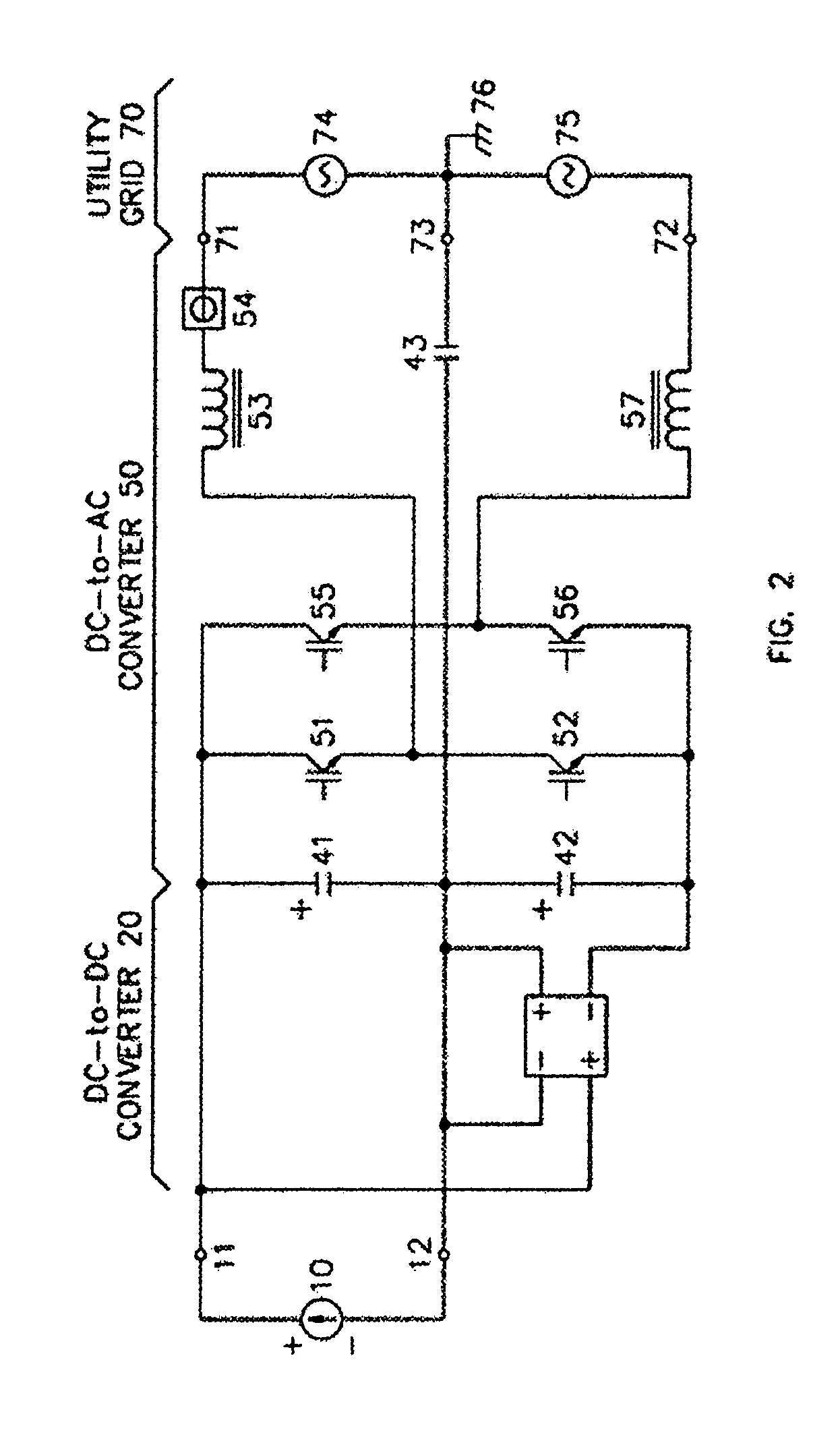Monopolar DC to bipolar DC to AC converter
a monopolar dc and bipolar technology, applied in the field of electric power conversion topology and apparatus, can solve the problems of heavy and expensive transformers, negative impact on overall inverter conversion efficiency, and low conversion efficiency of inverter,
- Summary
- Abstract
- Description
- Claims
- Application Information
AI Technical Summary
Benefits of technology
Problems solved by technology
Method used
Image
Examples
Embodiment Construction
[0017]A number of slightly different DC-to-AC inverter topologies will be disclosed, all with the common characteristic that less than 1½ conversion stages are used or, stated differently, that at least ½ of the power from a DC source is converted only once in the DC-to-AC conversion process. The topologies are variations of the central idea of the invention configured to facilitate different options for the PV array grounding and the utility grid configuration.
[0018]The preferred embodiment of the invention is shown in FIG. 1. PV array 10 is connected to inverter input terminals 11 and 12, across energy storage capacitor 42 and across the input of DC-to-DC converter 20. The output of DC-to-DC converter 20 is connected to energy storage capacitor 41. Capacitors 41 and 42 comprise the “bipolar energy storage element” referred to in the claims. Transistors 51, 52, 55 and 56 are connected in a typical full-bridge arrangement. For clarity, anti-parallel diodes across each transistor are...
PUM
 Login to View More
Login to View More Abstract
Description
Claims
Application Information
 Login to View More
Login to View More - R&D
- Intellectual Property
- Life Sciences
- Materials
- Tech Scout
- Unparalleled Data Quality
- Higher Quality Content
- 60% Fewer Hallucinations
Browse by: Latest US Patents, China's latest patents, Technical Efficacy Thesaurus, Application Domain, Technology Topic, Popular Technical Reports.
© 2025 PatSnap. All rights reserved.Legal|Privacy policy|Modern Slavery Act Transparency Statement|Sitemap|About US| Contact US: help@patsnap.com



